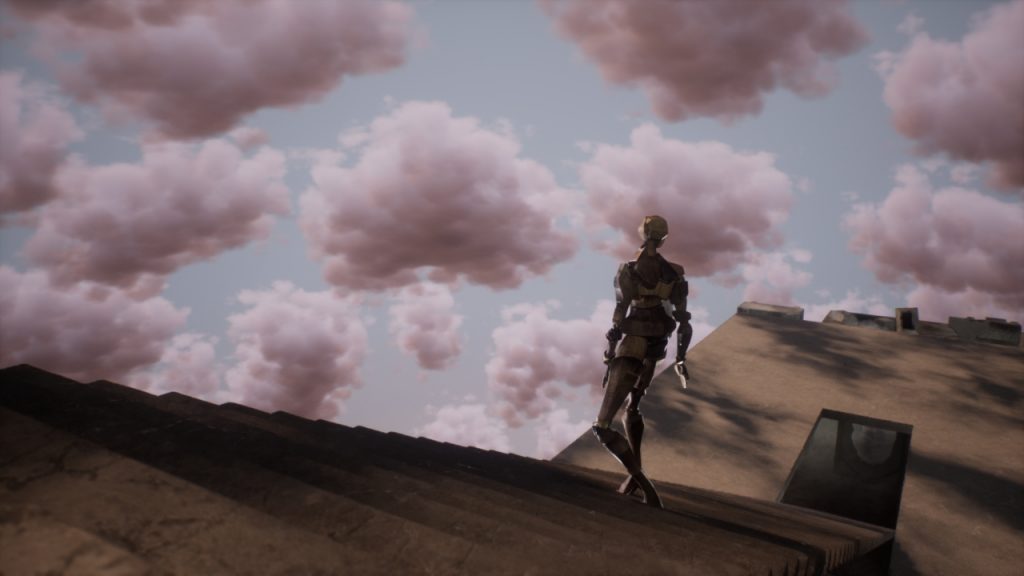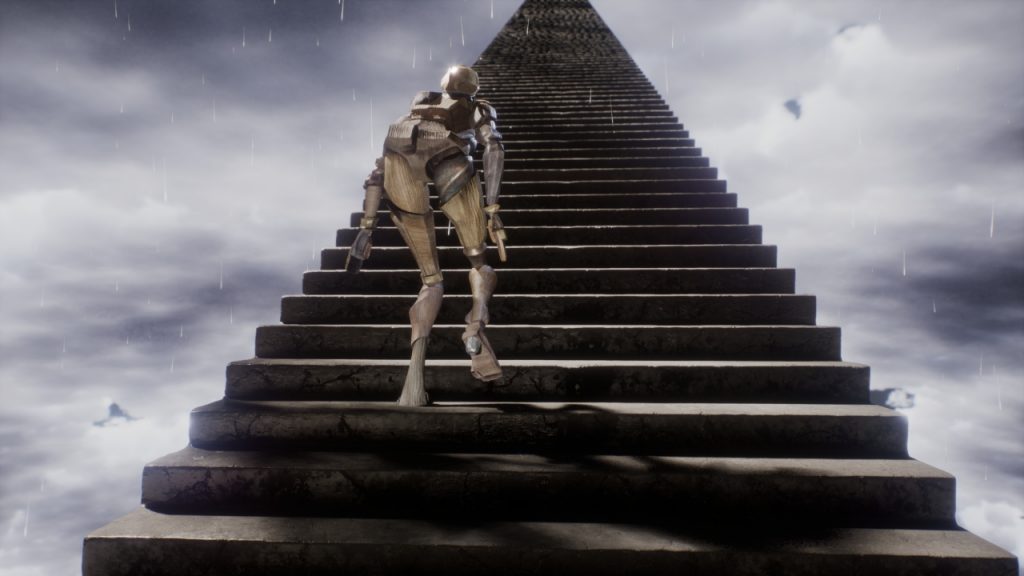A project that passed through the Biennale College and the IFFR market in Rotterdam, DUCHAMPIANA returns as a work-in-progress in the Darkroom section at the International Film Festival Rotterdam (IFFR) 2024. An opportunity to discuss the project with its coproducer Sarah Arnaud (Tchikiboum, France) and its creator Lilian Hess, an independent artist who has worked in all audiovisual formats and produced several XR projects (including COSMOS WITHIN US).
- Darkroom @ International Film Festival Rotterdam (IFFR) 2024
- CineMart @ International Film Festival Rotterdam (IFFR) 2022 (4DR Studios Award)
- Berlinale Talents 2022 – Short Form Station
- Venice Gap-Financing Market @ La Biennale di Venezia 2021
- The Biennale College Cinema – Virtual Reality (5th edition)
Produced by Tchikiboum and mYndstorm productions Berlin and Munich, supported by CNC France, FFF Bayern and the Bavarian State Ministry for Digital Affairs and medienboard Berlin Brandenburg

An interactive project in a transitional space
Lilian Hess – Having pitched DUCHAMPIANA in 2022 (winning one of the 4DR Studios Awards at CineMart), we’re delighted to be back at IFFR as part of the Darkroom work-in-progress presentations. We’ll be presenting a prototype version of the project, which is already interactive. This will enable us to carry out a full-scale test phase.
L. H. – DUCHAMPIANA is a project I imagined in 2016, when I began to wonder about the notion of the staircase as an element in our lives. A staircase is a place where we pass, where we don’t stop, but which is an integral part of our daily lives. It’s a transitory place, which can have poetic and imaginary incarnations. I made a short documentary on this subject, but I wasn’t totally convinced by it, and it didn’t seem to convey what I wanted to say. In particular, by adding a question of the female gaze.
S. A. – The Biennale College – online in 2021 due to Covid – was a decisive step in defining the project’s contours. We had the opportunity to take part in several workshops that enabled us to find solutions between our intentions and the project’s influences. The process was shared and evolving to combine form and content, without forgetting interactivity. This enabled us to better understand the user’s perspective in this highly participative proposal.

DUCHAMPIANA, an experience inspired by contemporary art
L. H. – In 2017, I began working in the field of immersive creation with COSMOS WITHIN US, and this opened up a new field of investigation – particularly on interactivity, movement, dynamics. The medium seemed more conducive to what I wanted to propose for DUCHAMPIANA, with an installation in which the spectator becomes the narrator of the story through his or her own body. I wrote a first version of the story, which I proposed to Sarah, and we submitted it to the Biennale College, where we were selected.
L. H. – The inspiration for the work of French painter Marcel Duchamp (1887 – 1968), his style and the painting “Nude Descending A Staircase”, came from my research into the use of staircases and the place of the female body in art history. It’s a famous painting that has since been interpreted by other artists (notably as a sculpture by Shigeko Kubota in 1976). But there is also an iconography of the staircase in numerous films, for example. The idea of the femme fatale who languorously descends a staircase, the young high-school girl is transformed into a prom queen… Women are not given agency in a lot of these narratives to decide themselves on the trajectory of their lives. I wanted to transform and re-route this movement and turn it into a move towards female empowerment in a metaphorical way. Rather than down, we go up and take new directions, as bodies in our own right rather than bodies arranged and put on display by others. What’s special about Duchamp’s work is that it doesn’t really reveal nudity, or the gender of the person depicted. I like this unusual interpretation of the motif of “the nude descending the stairs” – different and much more imaginative than how other artists have interpreted the this famois motif.

L. H. – The user must remain free; in DUCHAMPIANA, there is no body represented. And I didn’t want to impose a definition of the body, or a status. It’s actually more comfortable to enter into the experience. And I don’t know the history or background of each participant! You’re there to follow Duchampiana’s journey , her enigmatic character. But you remain in control of your own journey also, with no visual distractions but only the repetitive aspect of the process (up ). It was a real balancing act between the physical aspect of the experience, the reaction of the human brain and the technical imperatives.
S. A. – … and it’s very satisfying to see that the first testers are reacting so well!
L. H. – Duchamp’s graphic style is necessarily very abstract, but with identifiable shapes. This allows us to use a wide variety of shapes and ideas, without referencing bodies too much. We’re really talking more about movement and abstraction. And I was able to draw inspiration from the artist’s colors and world. It was the possibility of creative freedom (often minimalist) that inspired me. In the end, DUCHAMPIANA is a physical experience based around a staircase installation that uses light and sound.

S. A. – DUCHAMPIANA is above all a question of genre definition. The painting doesn’t impose a specific representation of the body, even though it’s called “Nude”. We’re in the same business. And it’s not disruptive to continue this discussion, because it’s at the heart of our times.
Onboarding an immersive installation
L. H. – We’re currently working on the DUCHAMPIANA prototype with the help of Paris-based studio Femme Fatale (link) and I-mmersive in Berlin Onboarding is clearly integrated into our thinking, given the very concrete nature of the experience. The aim is to offer a seamless entry into DUCHAMPIANA, without imposing any preliminary steps or redundant explanations before actually living the experience. This is one of our next tests.

Sarah Arnaud – The core of the project was really the idea of an interactive installation that would involve the viewer in movement and the body (agency). Meeting with our co producers Kathrin and Oliver was also key to think another way of the installation, considering their expertise on spatial installations. Beyond being a support, they are also invested on this question of what we offer to the audience. Since the start of production, this has been a challenge we’ve taken up – although it’s not an easy one! It seemed obvious that we should be able to envisage several versions in anticipation of the work’s accessibility, with a version requiring less equipment, or a linear version for people with reduced mobility in particular.



Leave a Reply
You must be logged in to post a comment.